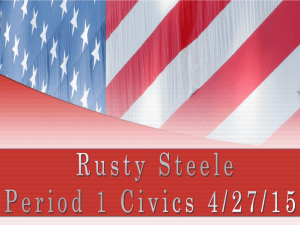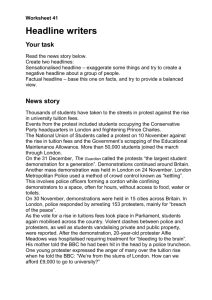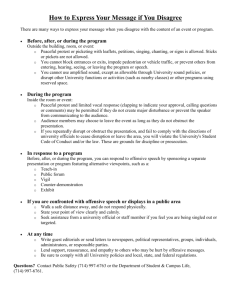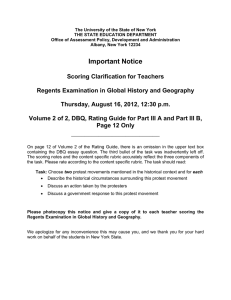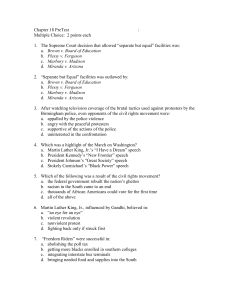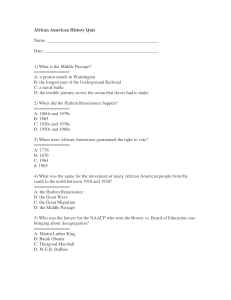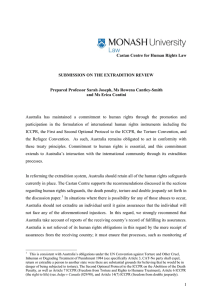Castan Centre for Human Rights Law Monash University Melbourne
advertisement
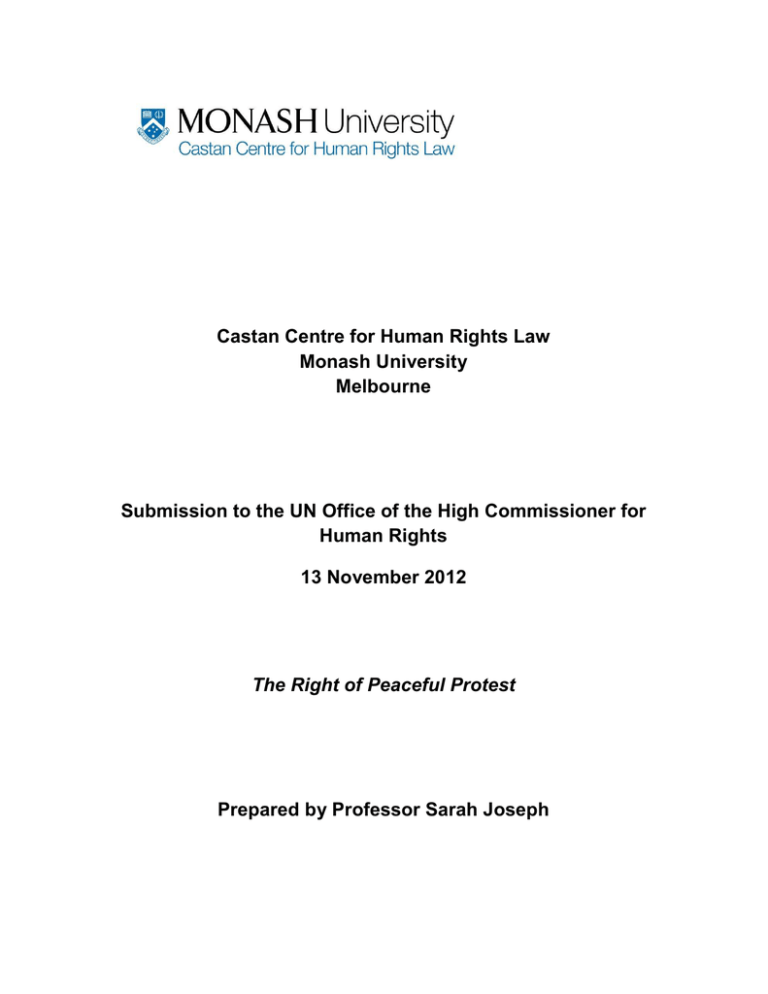
Castan Centre for Human Rights Law Monash University Melbourne Submission to the UN Office of the High Commissioner for Human Rights 13 November 2012 The Right of Peaceful Protest Prepared by Professor Sarah Joseph The Castan Centre for Human Rights Law at Monash University, Australia, submits the following points to assist in the preparation of a report on the right of peaceful protest by the UN High Commissioner on Human Rights. 1. This right is protected under Article 20(1) of the UCHR and Article 21 of the ICCPR. The right has not been the subject of significant jurisprudence under the ICCPR, with most violations thereof being quite straight-forward.1 The most complex case is Kivenmaa v Finland,2 where the reasoning was unfortunately quite opaque.3 It is therefore desirable that the Human Rights Committee be requested to prepare a General Comment on Article 21, which is one of the few substantive ICCPR rights which has not been the subject of a General Comment. 2. Guidance is sought in the report on the extent to which States can validly impose prior notice requirements on public assemblies and demonstrations, as well as requirements regarding the site of demonstrations. 3. The rights of demonstrators must be appropriately balanced against the rights of people who might be affected by demonstrations, such as private business owners in the vicinity of a demonstration. However, the importance of the right to demonstrate, a crucial aspect of the right to peaceful assembly, must be borne in mind, and given some priority when weighed against rights which are not human rights, such as the “right” of shop owners to trade without any disturbance,4 or the “rights” of pedestrians to unhindered passage through a public area.5 4. It must also be recognised that the right to demonstrate does sometimes conflict with other human rights, as in the case of a right to security of the person in the case of some demonstrations at abortion clinics. Some participants in an assembly might engage in hate speech, which should be prohibited and punished. However, hate speech must not be confused with speech which some or even many people might find offensive – they are not one and the same thing. 5. The extent to which rights of peaceful assembly apply on private land is an extremely important issue which should be addressed in this report. While no one can claim a right to demonstrate inside someone’s house, or inside a private shop, there are arguably good reasons why rights of assembly should be recognised in large private areas, such as 1 See, eg, Gryb v Belarus UN doc. CCPR/C/103/D/1316/2004 (8 December 2011) UN doc. CCPR/C/50/D/412/1990 (31 March 1994) 3 See S. Joseph, J. Schultz and M. Castan, The International Covenant on Civil and Political Rights: Cases nd Materials and Commentary (OUP 2 ed, 2004), p. 572. 4 This right is not a human right, though extreme or constant disturbance could eventually impact on economic social and cultural rights such as the right to work or the right to an adequate standard of living. 5 Again, this right can be a human right if the pedestrians feel intimidated in any way (eg Article 9 ICCPR, right to security of the person). However, avoidance of “nuisance value” is not a human right. 2 open air shopping precincts, where pedestrians are freely allowed access.6 There should be no automatic assumption that such places are immune from public assemblies: their nature and actual usage should be considered as relevant in deciding whether rights of assembly apply. 6. The report should address the permissible forms of public protest. In particular, the Occupy movements in 2011 were characterised by long term camping on public or quasi public land. To what extent does one have a right to assemble in such a manner? The report should pay attention to domestic decisions in this regard concerning the eviction of Occupy campers. 7. Guidance should be given to police over appropriate crowd control mechanisms. For example, police must wear identification at all times, so that there may be some recourse if they should use disproportionate force. Where possible, they should always refrain from the use of force, in order to prevent escalation of a heated situation. If people are taking part peacefully in an illegal protest (which is legitimately illegal), for example by linking arms and refusing to move upon being ordered to do so, police must ensure that they use only proportionate force in removing or arresting such people. Furthermore, if one small part of a protest becomes violent, police must not act as if all protesters have behaved in the same way. Finally, the report should provide advice on when, if ever, tactics such as the use of CS gas, tasers or the kettling of crowds are permissible. 8. Civil disobedience is historically an important form of protest. Therefore, from a moral point of view, protesters are sometimes justified in refusing police orders or taking part in an illegal demonstration. The punishment of such people should therefore be proportionate, and they should not be made an example of. In many instances of actual civil disobedience, the domestic illegality of such a demonstration will in any case be illegitimate under international human rights law. 6 See, on this, Adam Fletcher, “Is the Max Brenner protesters’ court victory an Australian legal watershed?”, The Conversation, 26 July 2012, at http://theconversation.edu.au/is-the-max-brenner-protestors-court-victoryan-australian-legal-watershed-8441
